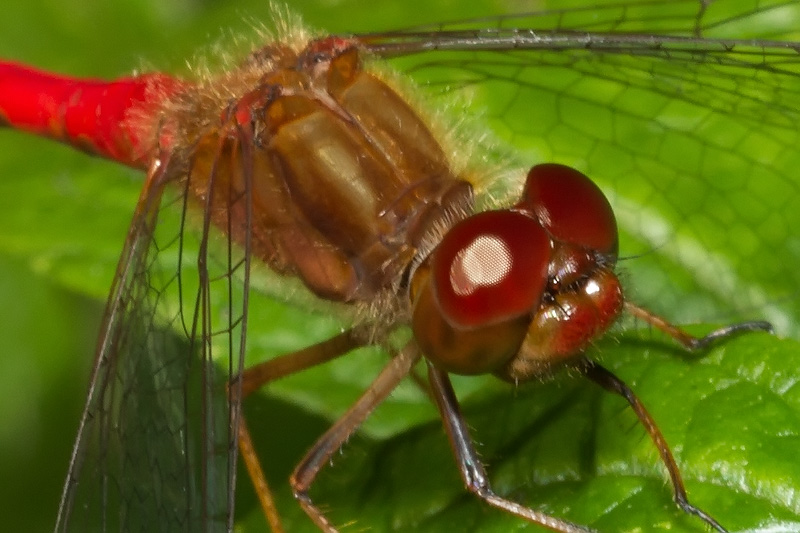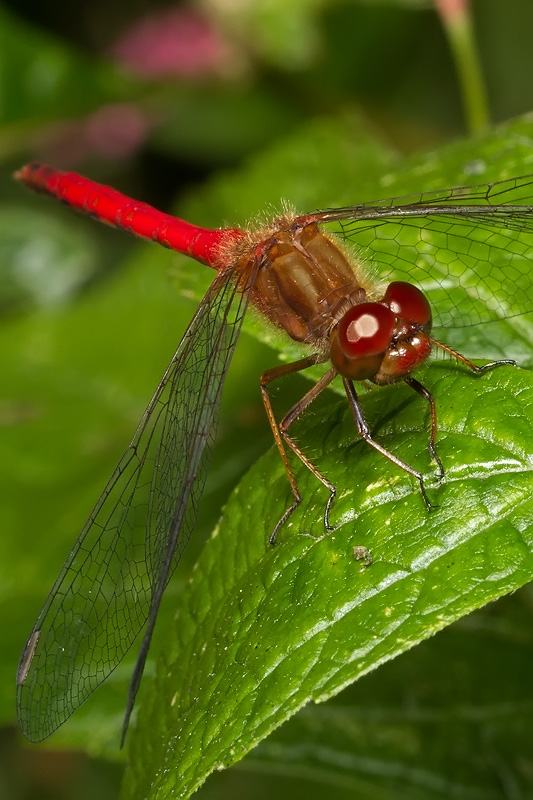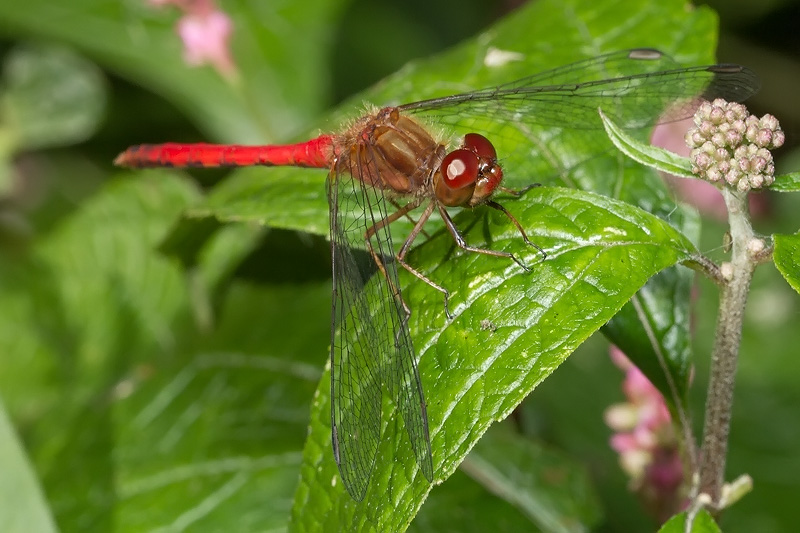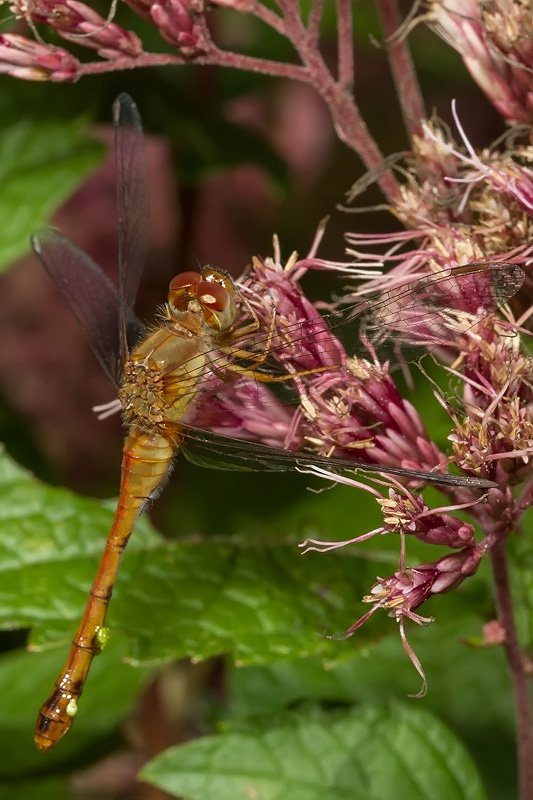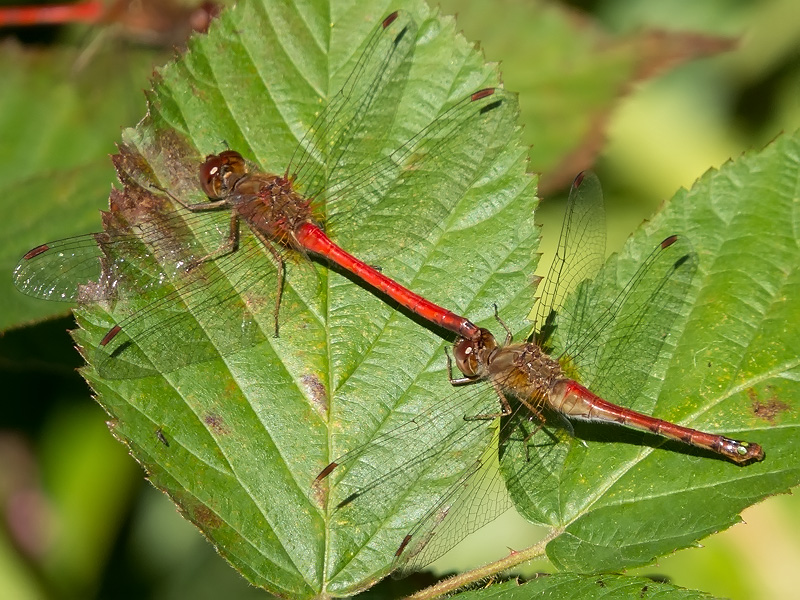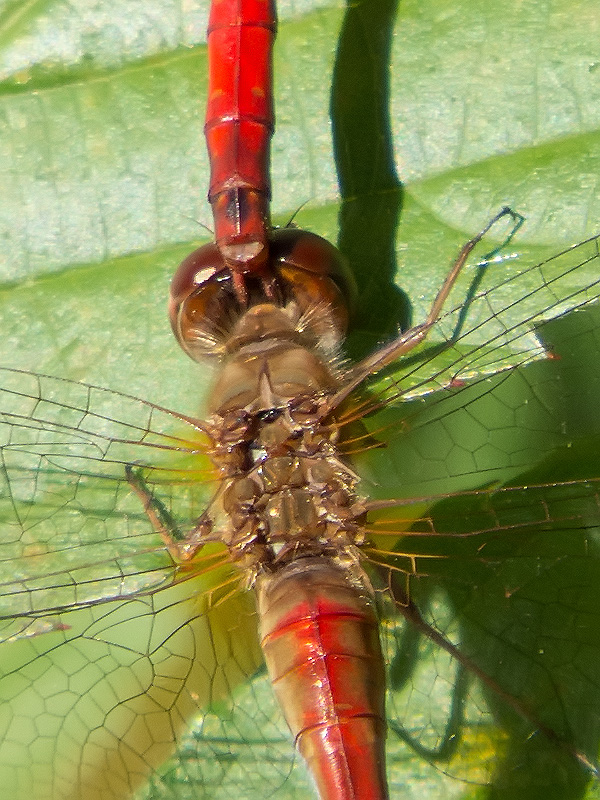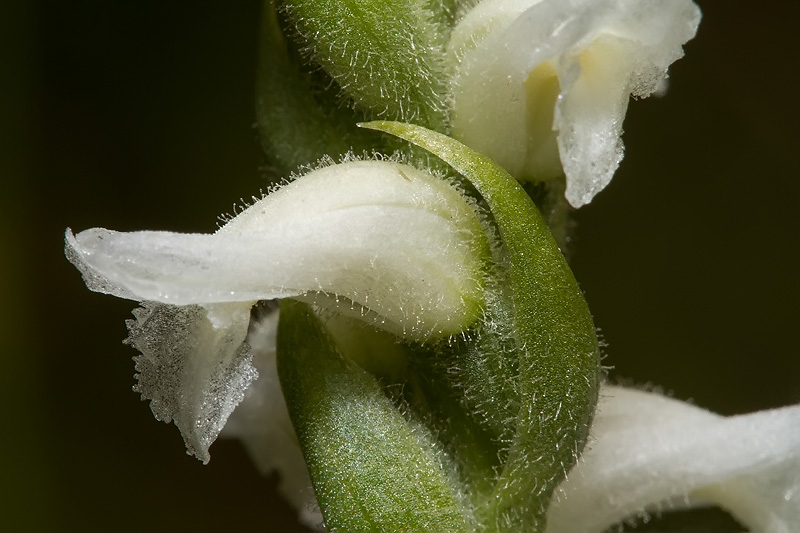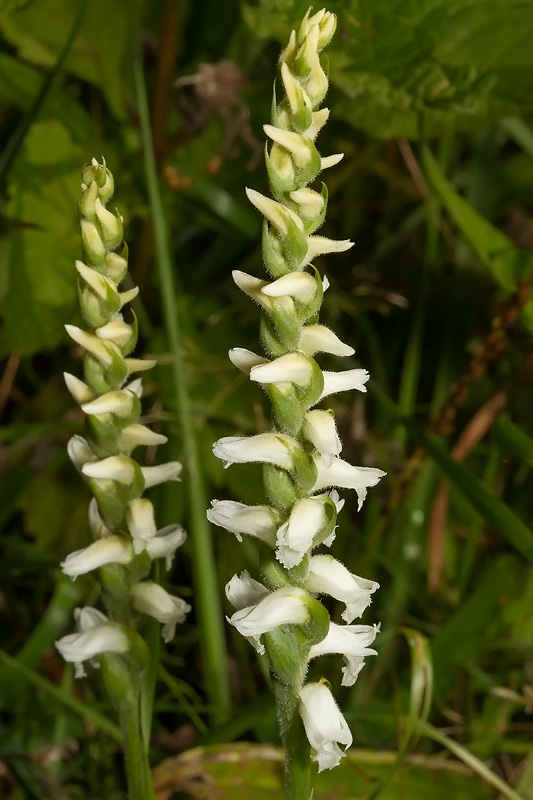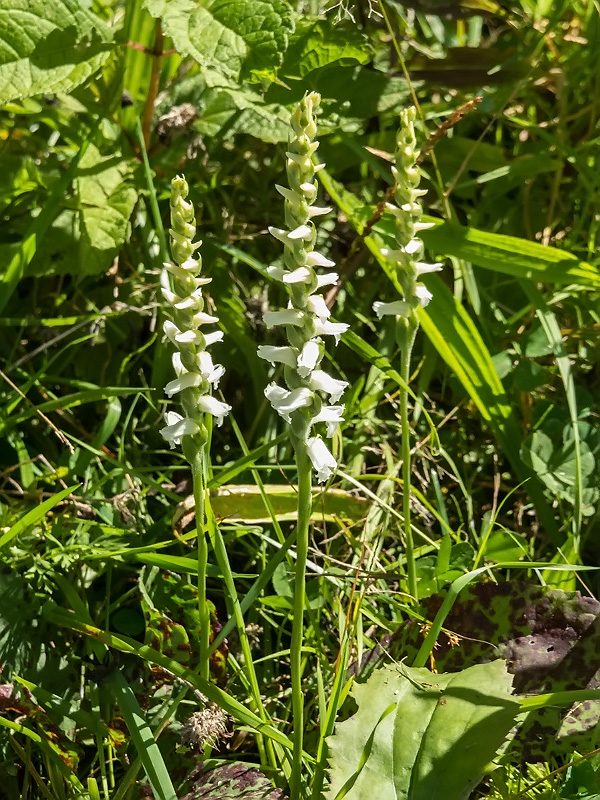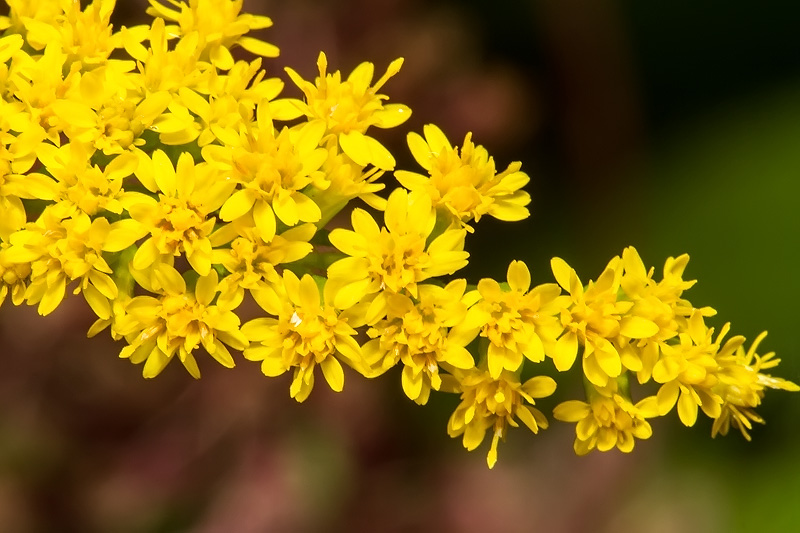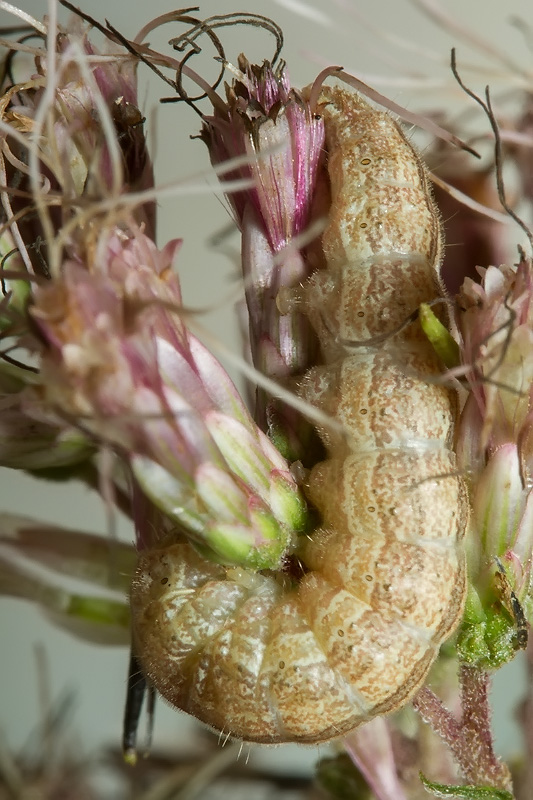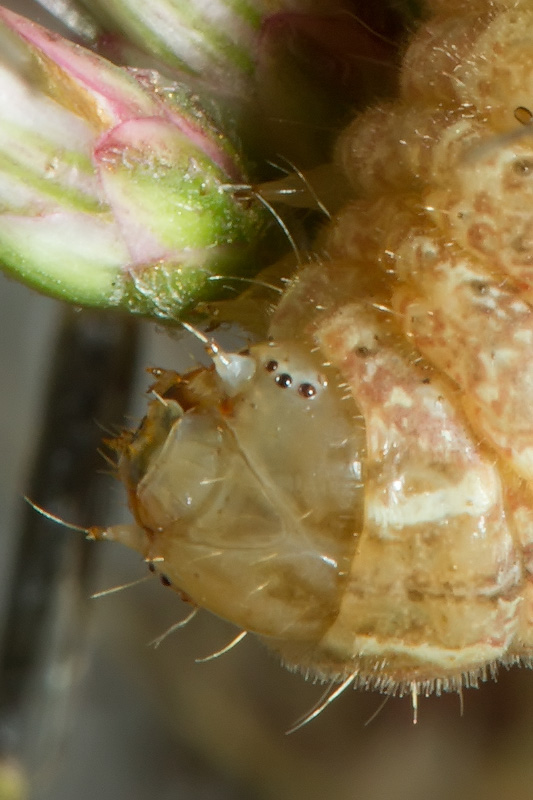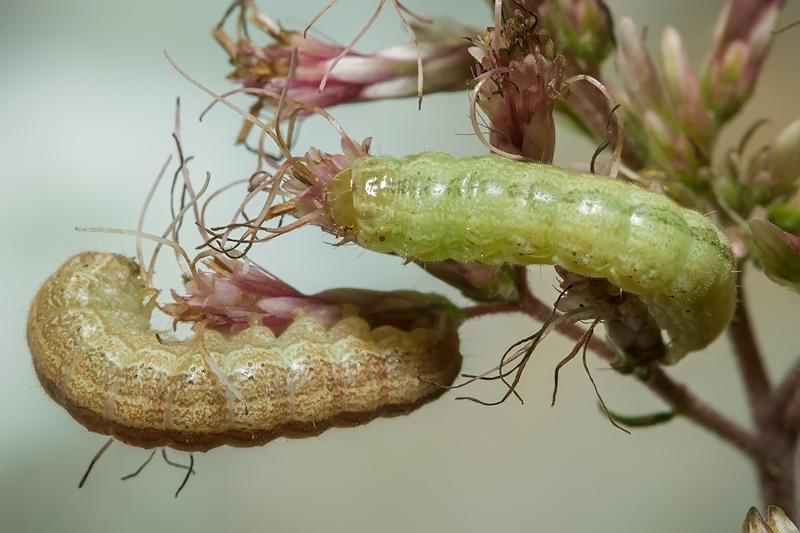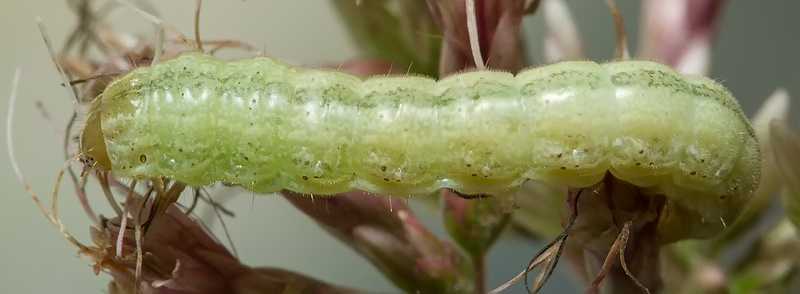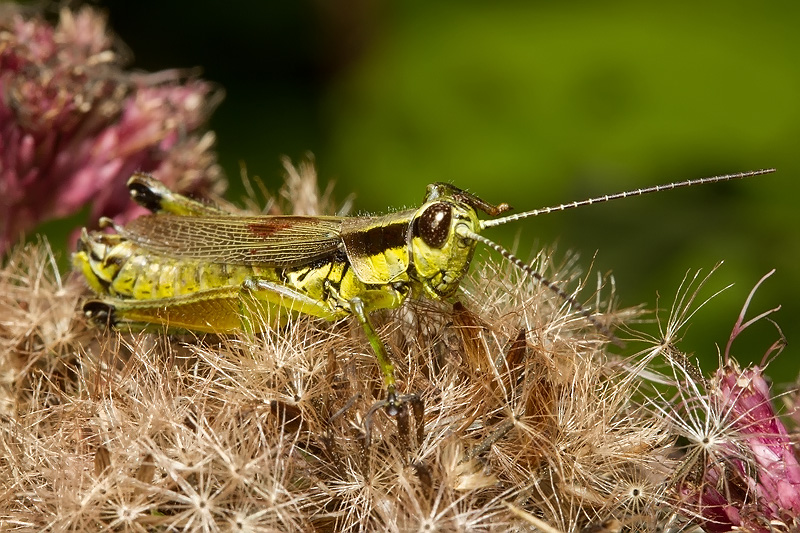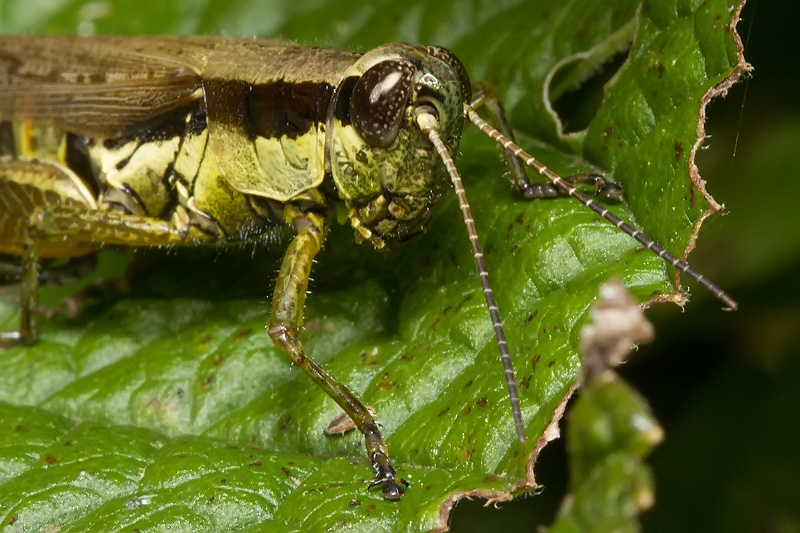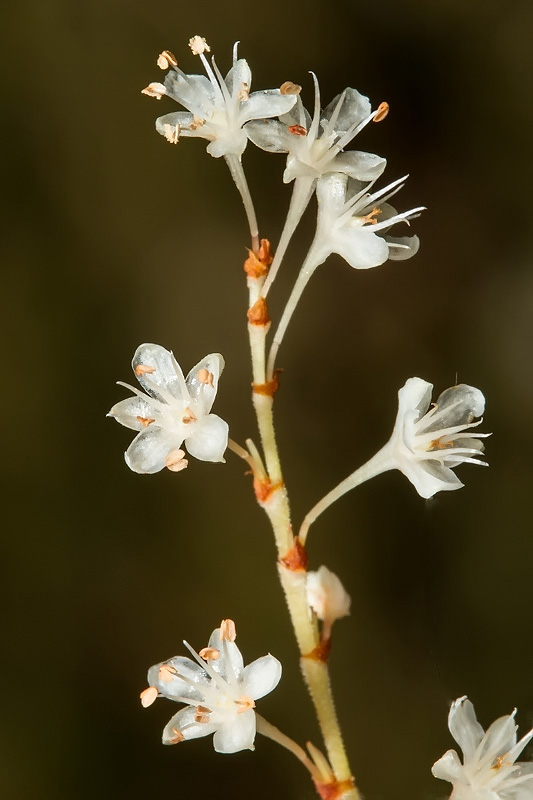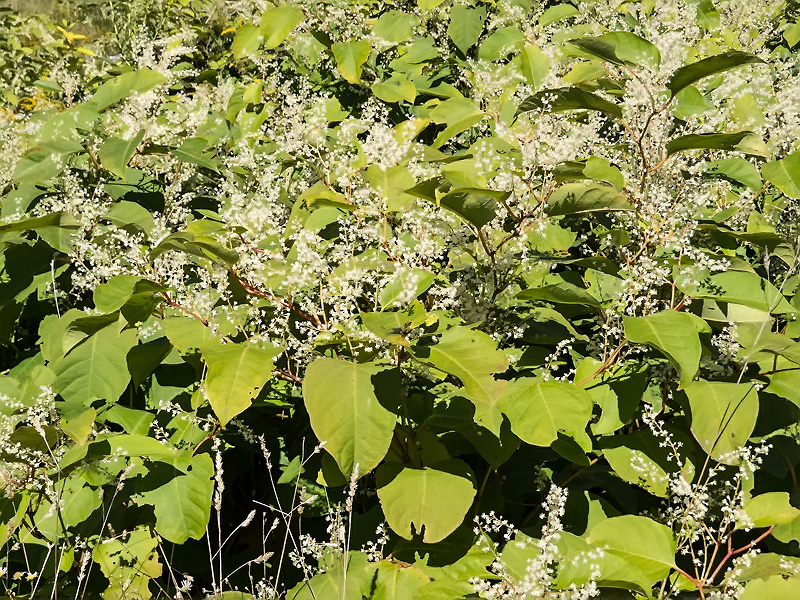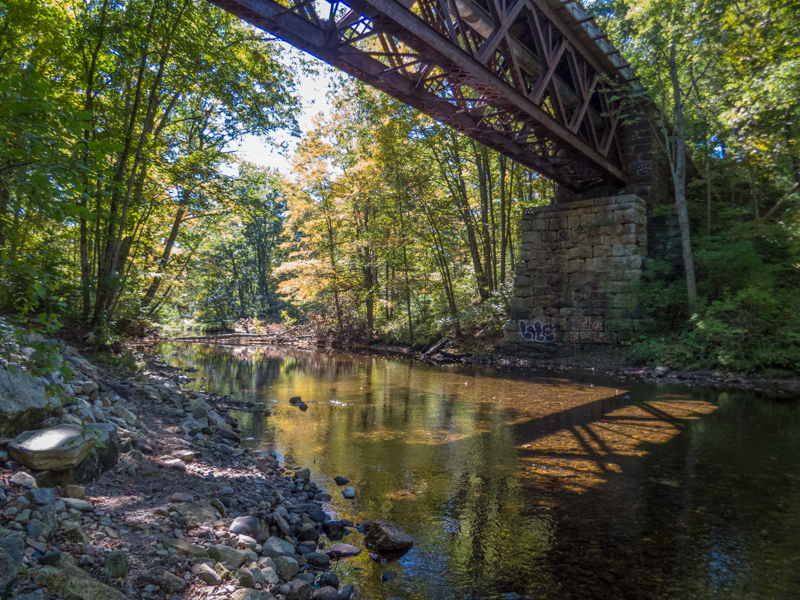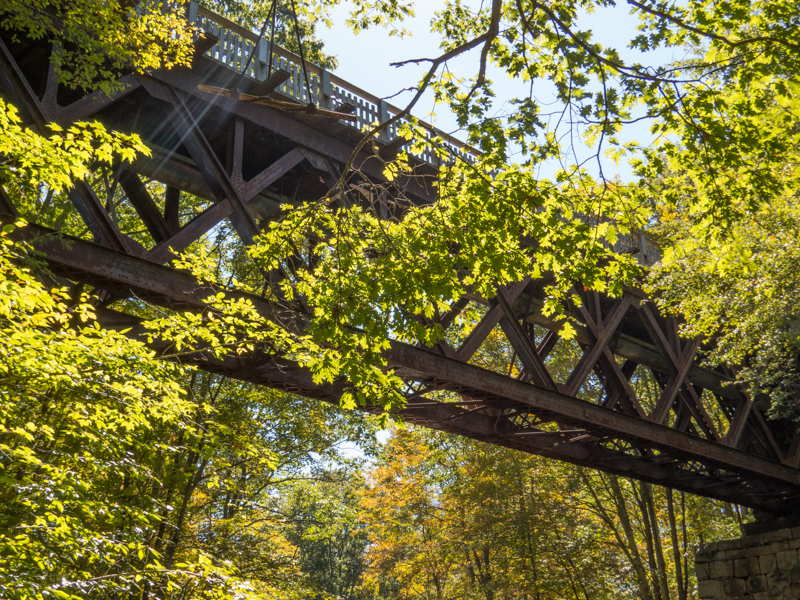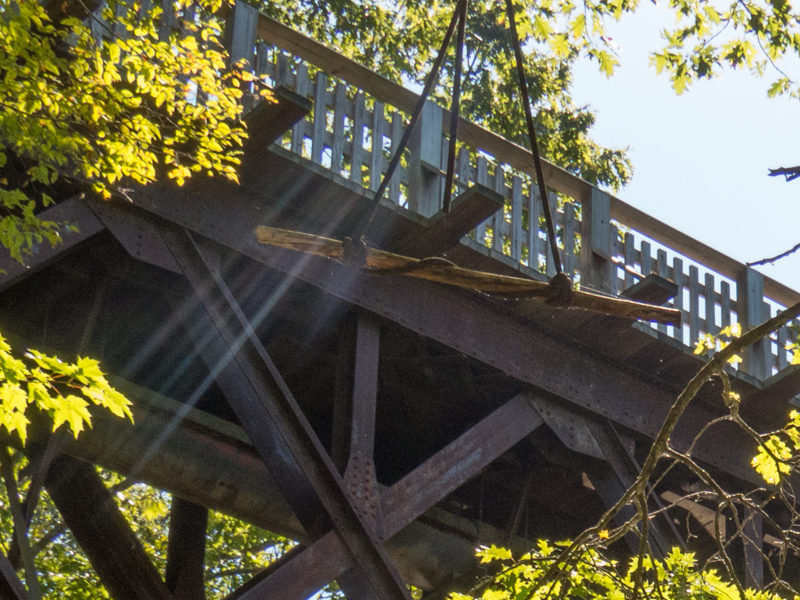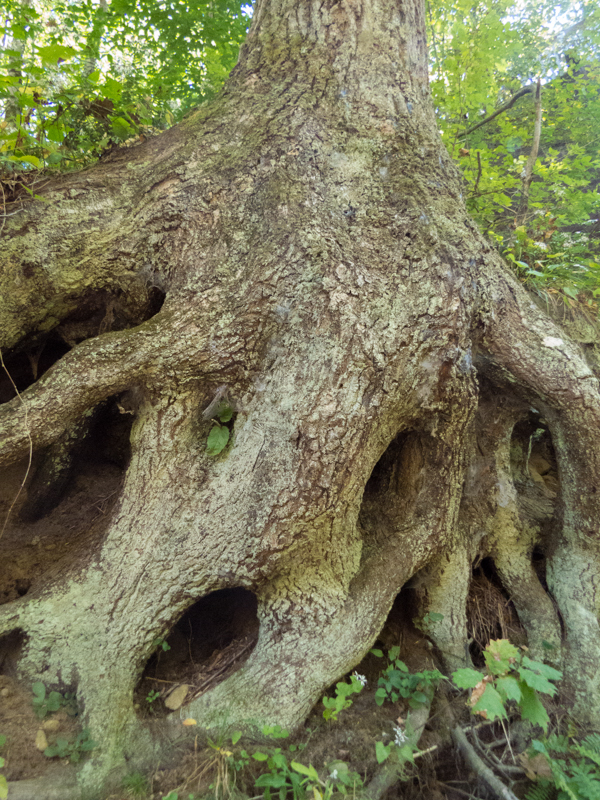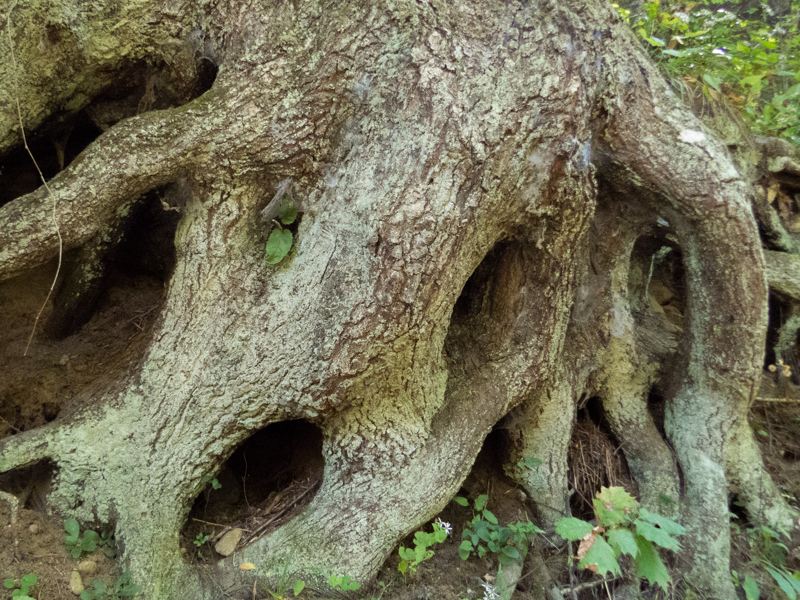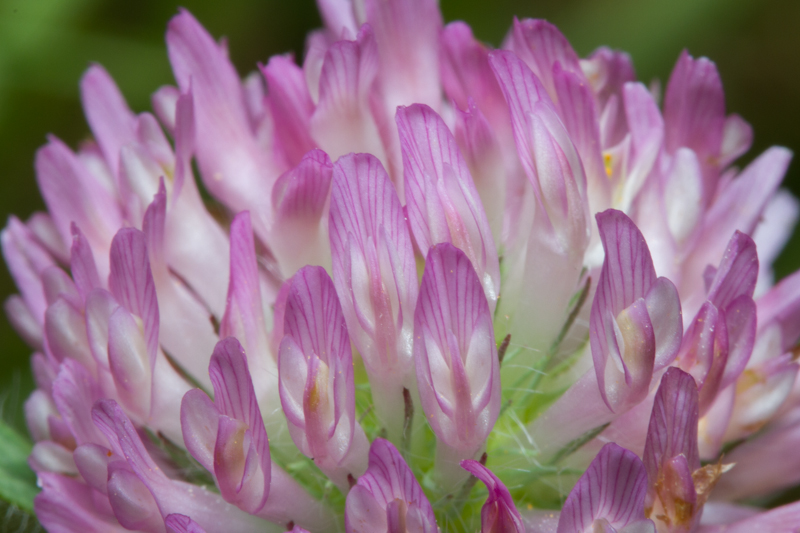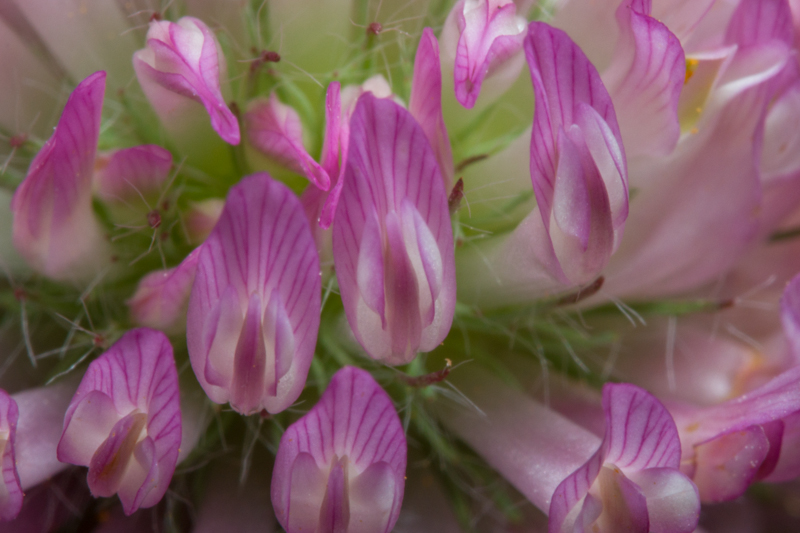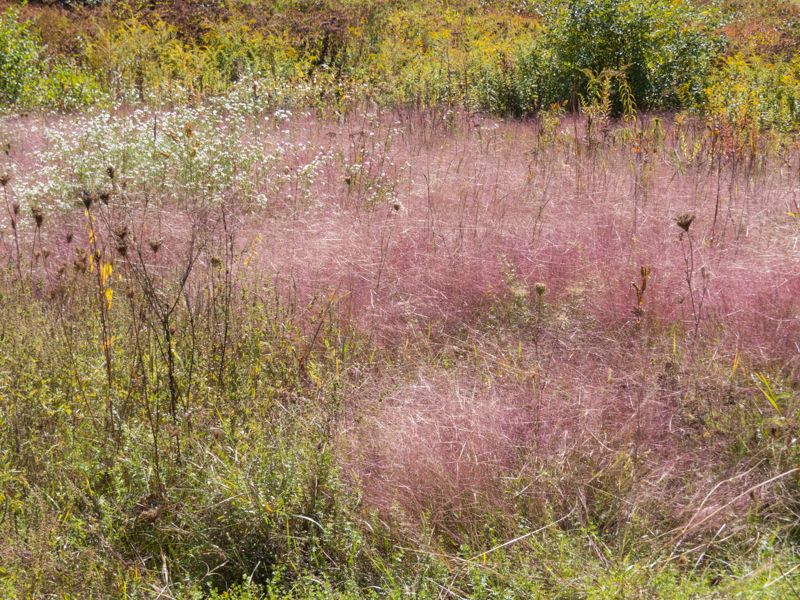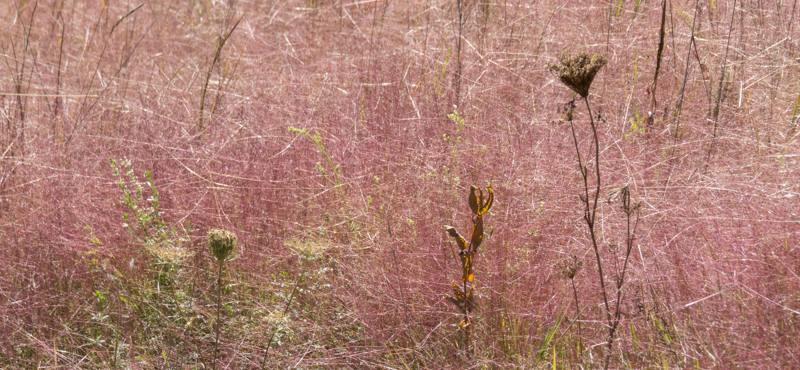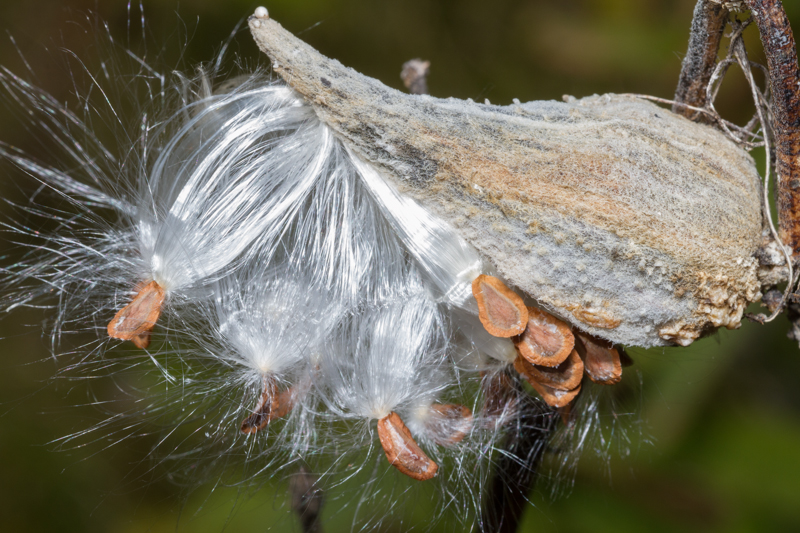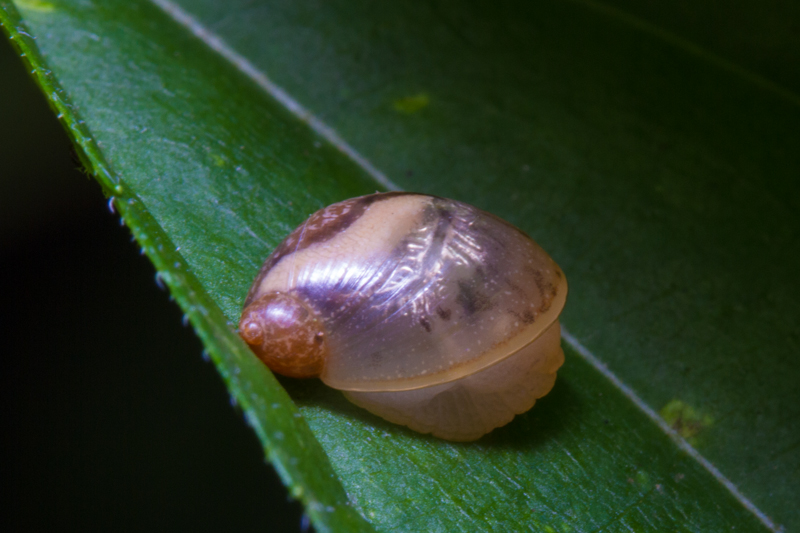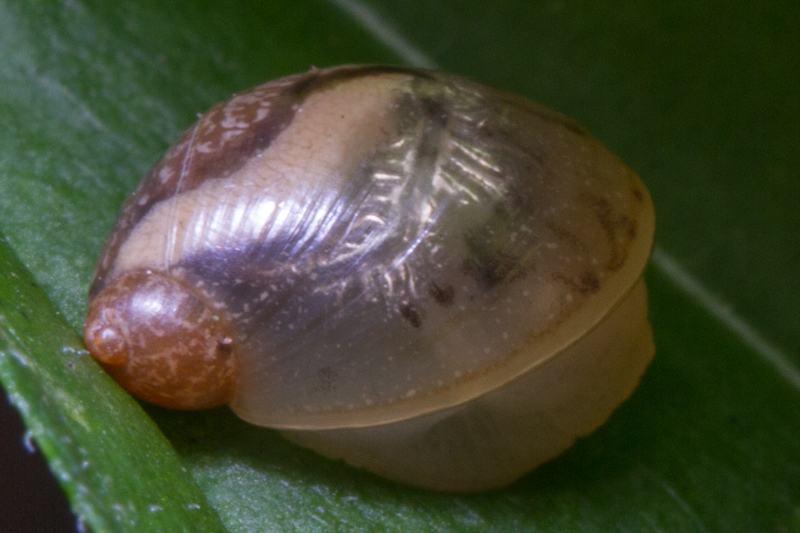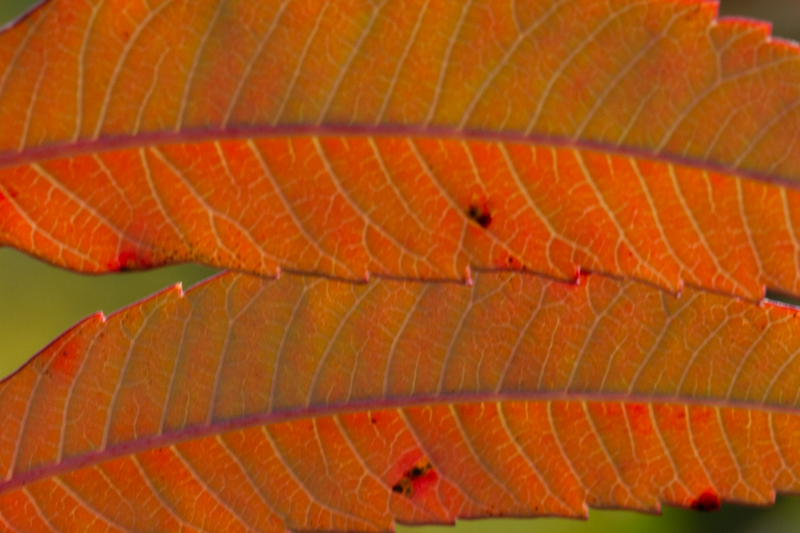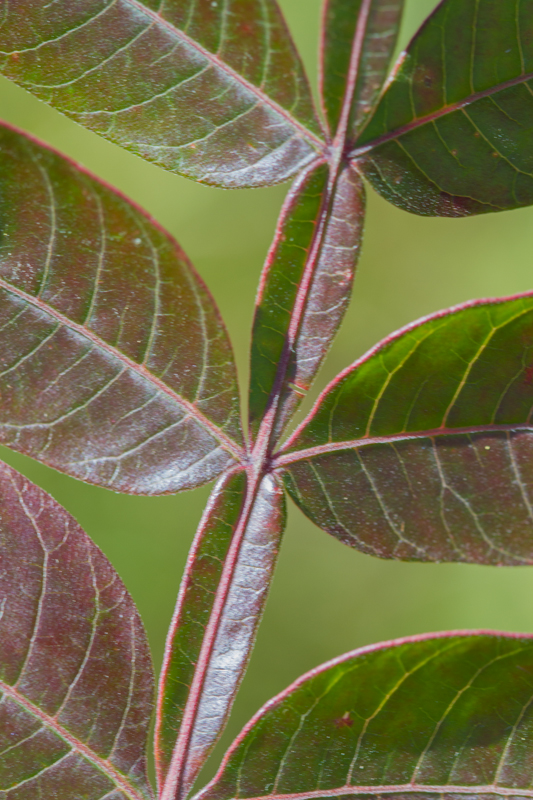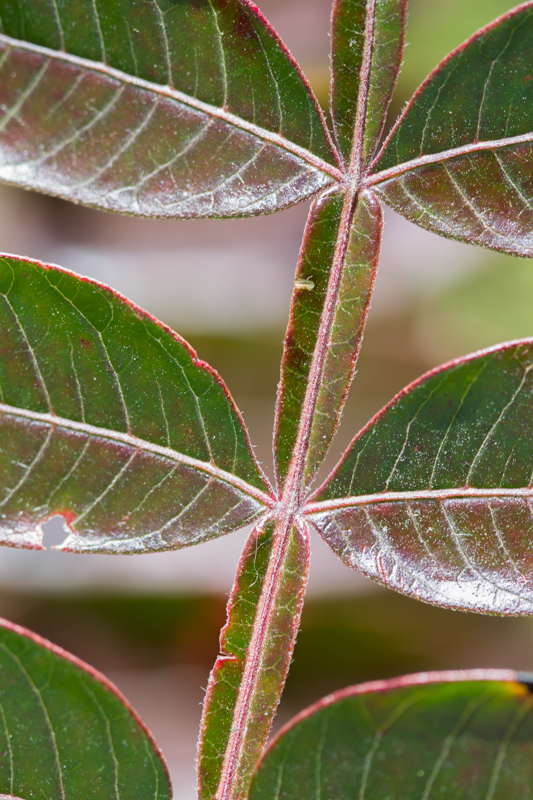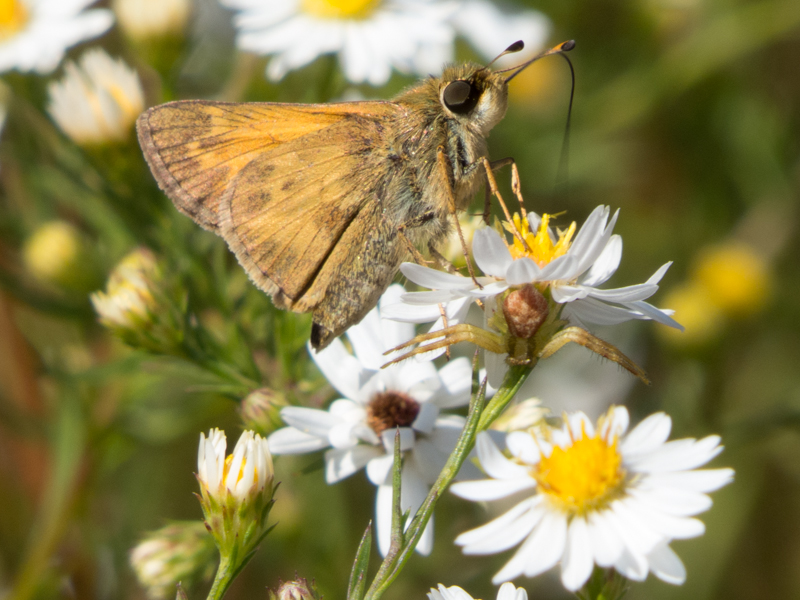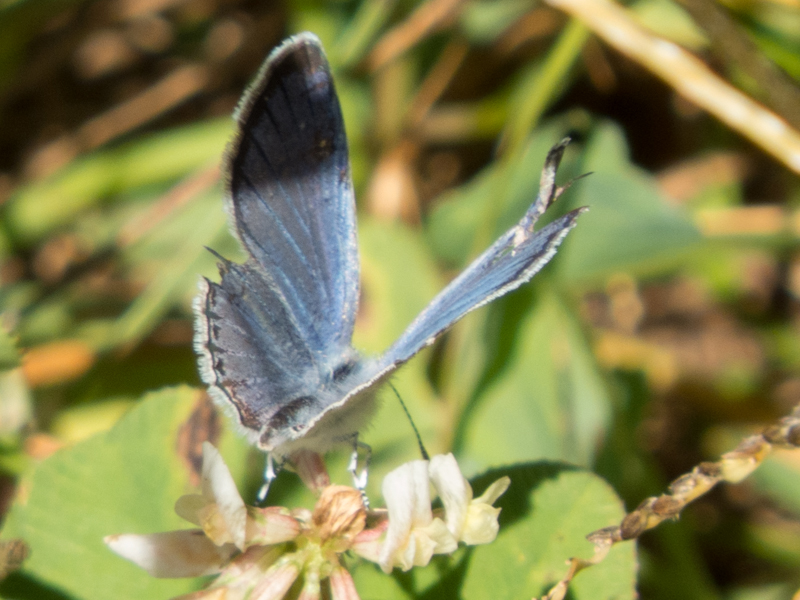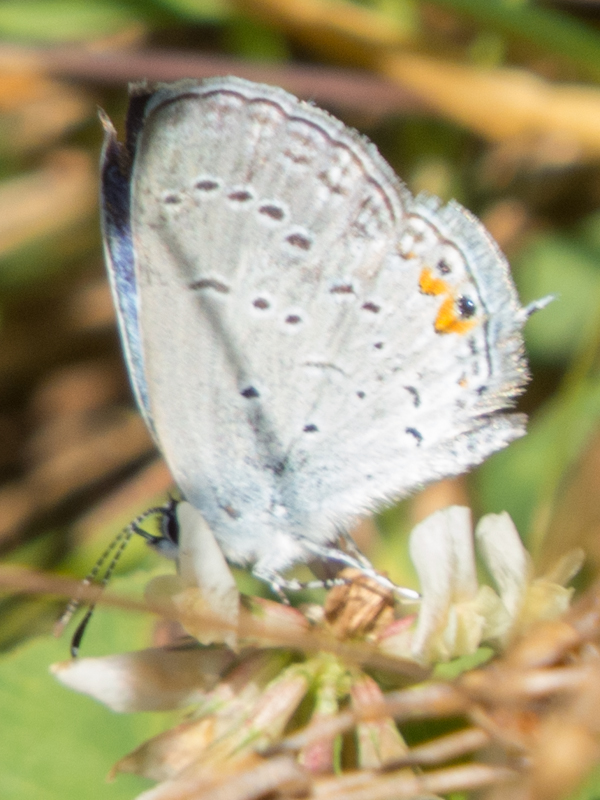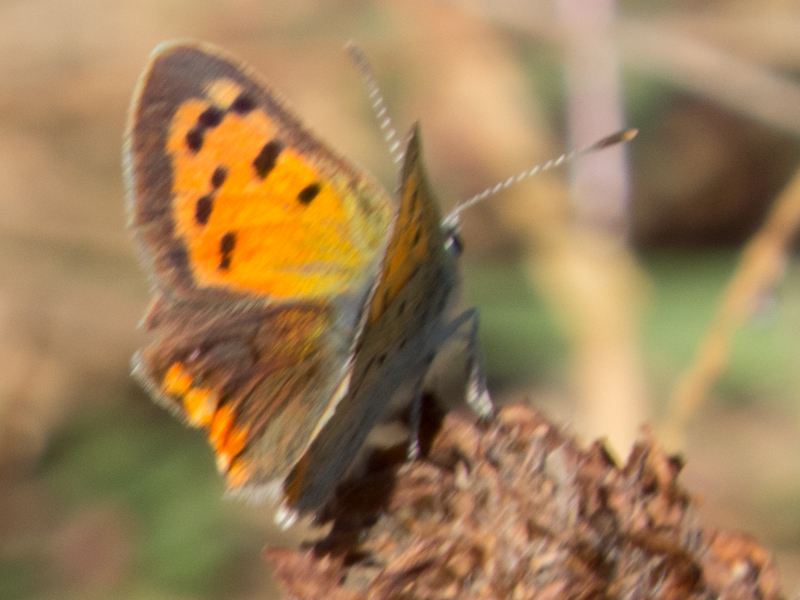Along the Air Line... 2013 - Summer, Part 10 The Air Line Trail in Eastern Connecticut - Stan Malcolm Photos |
mHome Page Stan's FlickR Albums |
September 18th. An afternoon visit to Cranberry Bog in East Hampton. This is a male Meadowhawk (Sympetrum sp.). |
|
|
Females are mostly brown. This one has a couple of Duckweed (Lemna minor) plants clinging to its abdomen. |
A previously mated pair. (Mating is a complex affair in several stages, starting with the male coupling with himself.) Pairs are remarkably adept at flying in tandem, with the female dipping her abdomen in water to release eggs. |
The male clasps the female around her narrow neck. |
Nodding ladies'-tresses orchids (Spiranthes cernua). |
|
The flowers form a double spiral around the stem. |
The plants are inconspicuous amid other vegetation. |
Nice to see the Goldenrod (Solidago sp.) so lush. |
I saw a number of caterpillars tucked deep into the blossom heads of Joe-Pye-weed. |
I'm pretty sure they're of the Three-lined Flower Moth (Schinia trifascia). |
|
They range from tan to pale green. |
|
I only see this species of Grasshopper at Cranberry Bog. Sorry, I can't remember its name. |
|
Bet you wouldn't guess the identity of these tiny flowers... |
September 20th. A walk near the Blackledge River bridge over the trail in Colchester, plus the fields on either side. |
What's that hanging off the bridge at the left? |
Oh, oh, it looks like some sort of swing. |
|
|
A little Red Clover (Trifolium pratense) still blooming. |
|
A pretty pink grass. |
|
Milkweed pods are spreading their seeds. |
A really tiny land snail. |
|
Two kinds of Sumac (Rhus sp.). |
|
This is Winged Sumac (Rhus copallina). |
|
A Skipper (Family Hesperiidae) taking nectar just above a crab spider. |
An Eastern Tailed Blue (Everes comyntas). Note; The dark shadow on the forewing is misleading: only the outer margin has dark scales. |
|
A slightly deformed American Copper (Lycaena phlaeas). I also saw sulphurs and a fritillary. |
